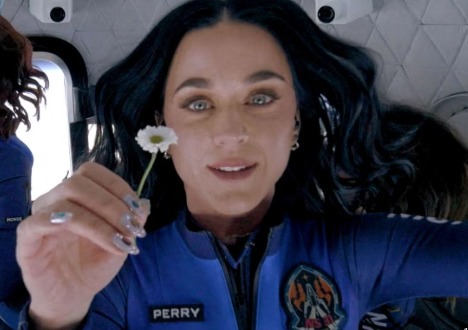On April 14, 2025, Katy Perry joined a crew of six women aboard Blue Origin’s new Shepard rocket for a brief, 11-minute trip to the edge of space. The all-female crew, called historic by many, included not only celebrities like Perry and journalist Gayle King, but also accomplished professionals such as former NASA aerospace engineer Aisha Bowe and bioastronautics researcher Amanda Nguyen. While marketed as a milestone for gender representation in spaceflight, the event left many observers with a conflicted reaction: Was this a true leap forward, or a missed opportunity wrapped in PR?
First, it’s important to acknowledge that this wasn’t a publicity stunt entirely devoid of merit. Real research was conducted on board. Nguyen’s participation involved scientific investigations on women’s health in microgravity, and Bowe’s presence represented a breakthrough for women of color in aerospace. These contributions matter. They are not to be dismissed. But they were also, arguably, buried beneath the avalanche of headlines about the things that didn’t matter as much.
That’s where the unease starts to creep in. This was, first and foremost, a space tourism mission. The presence of globally recognized celebrities shifted the focus from scientific discovery and space access to spectacle and personal branding, and the optics of multimillion-dollar suborbital trips — particularly by the ultra-famous — can’t help but look tone-deaf in today’s world.
After all, this mission occurred against the backdrop of urgent global crises. According to the World Food Program, over 150 million children are currently facing food insecurity. The contrast between the image of Perry floating in microgravity for a few minutes and the millions suffering on Earth is stark. Yes, individuals can care about multiple things at once. But it’s fair to ask whether some of this money, attention, or effort might have been better directed elsewhere—or at least framed in a way that connected more clearly with Earth-bound challenges.
There’s also the question of how we define historic. While this was the first all-female crewed commercial spaceflight, the cultural emphasis fell disproportionately on the entertainment figures, unintentionally sidelining the actual scientists and engineers onboard. The mission had the potential to elevate the work of women in STEM and the importance of microgravity research. Instead, the dominant narrative became about celebrity access to space—another luxury tier in the lifestyle of the rich and famous.
This isn’t to say anyone was wrong to go. They had the right to participate, and by some accounts, were deeply moved by the experience. Perry even said the flight was second only to giving birth in terms of emotional intensity. But just because something is emotional doesn’t mean it’s impactful in the broader sense. When inspiration becomes decoupled from real-world benefit, it risks becoming performance.
In a broader sense, though, we must really evaluate the critiques we give. Actor William Shatner, Dude Perfect co-founder Coby Cotton, and TV host Michael Strahan have all been on similar flights, also with Blue Origin, and have not faced nearly the same amount of backlash. While there are a myriad of reasons as to why this could be, it is important to think about topics like this with an objective lens, neither overly critical nor blindly accepting. It’s rather telling, after all, that this all-female flight has garnered the most attention and backlash out of all the flights.
Ultimately, the NS31 mission showed us how close we are to blurring the line between space exploration and space tourism. It was a flight filled with potential—to highlight science, diversity, and female leadership. At the same time, it demonstrated how quickly those messages can be overshadowed when the focus shifts to celebrity. And that, more than the flight itself, is what left many people back on Earth with a lingering sense of disappointment.








